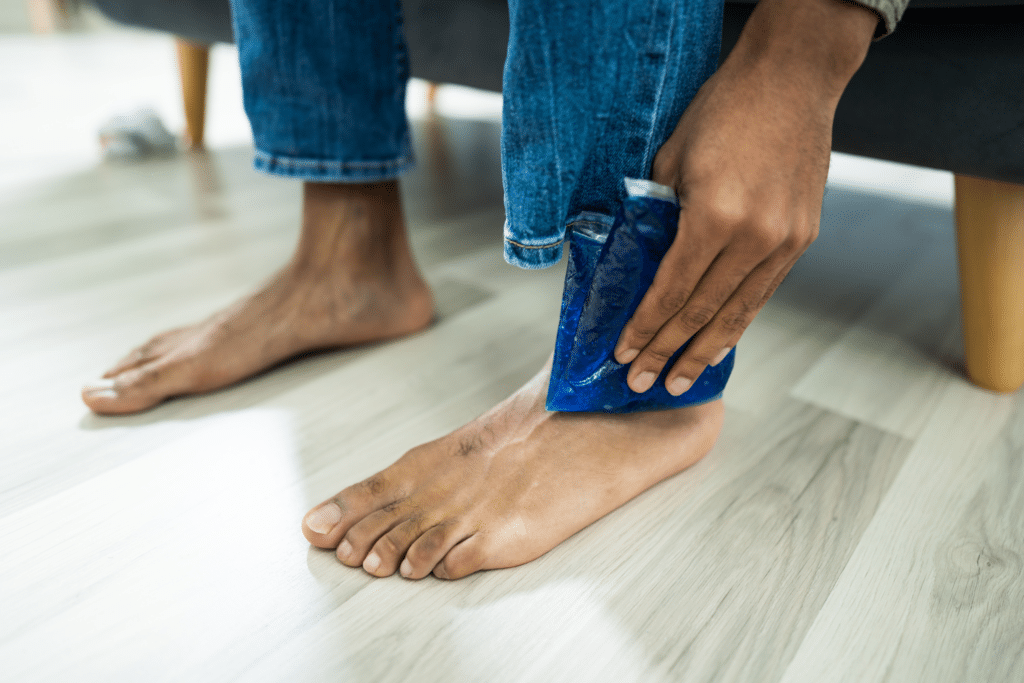Our feet and ankles are marvels of engineering, providing crucial support and mobility in our daily lives. When injury strikes in the form of a ankle sprains or fractures, understanding these conditions becomes pivotal for effective treatment and recovery.
Navigating the Road to Recovery with Expert Guidance
Imagine a world without the ability to walk, run, or jump. Our feet and ankles, with their intricate bones and flexible ligaments, play a pivotal role in our daily lives. When injury strikes, distinguishing between a soft tissue injury (sprain) and a bone break (fracture) becomes essential.
The Drama of Causes: Dynamic Causes
Injuries are often the culprits behind foot and ankle sprains and fractures. Whether it’s a high-impact sport like football or basketball, the repetitive stress of running, or a simple misstep on uneven ground, our feet and ankles bear the brunt of these incidents.
Sprains occur when ligaments—bands of tissue that connect bones at a joint—are stretched or torn, often due to sudden twisting motions or impacts. Fractures, meanwhile, involve breaks in the bone itself, ranging from hairline cracks to complete breaks.
Decoding Symptoms: Body’s S.O.S.
Recognizing the signs of a sprain or fracture is the first step toward effective treatment. Symptoms such as pain, swelling, bruising, and difficulty walking serve as the body’s S.O.S., signaling the need for immediate attention and care.
Imagine this scenario: You’ve just finished a game of basketball and feel a sudden pain and swelling in your ankle. The area is tender to the touch, and you struggle to put weight on it. These are typical signs of an ankle sprain, indicating that ligaments may have been overstretched or torn.

Home Care Wisdom: RICE Method Unveiled
At-home care plays a vital role in initial recovery. The RICE method—Rest, Ice, Compression, Elevation—provides a structured approach to managing pain and swelling. It’s crucial to rest adequately and avoid aggravating the injury during this critical phase.
- Rest: Limit weight-bearing activities to prevent further damage.
- Ice: Apply ice packs wrapped in cloth to the injured area for 15-20 minutes every few hours to reduce swelling.
- Compression: Use an elastic bandage to compress the injured area gently, helping to reduce swelling and provide support.
- Elevation: Keep the injured foot or ankle elevated above heart level whenever possible to minimize swelling.
Seeking professional assistance from Dr. Miyazaki is crucial for accurate diagnosis and effective treatment. Increased pain, swelling, bruising, redness, or difficulty walking are clear indicators that warrant a visit to a specialist. Our team offers personalized care plans tailored to each patient’s unique needs.
Upon examination, our seasoned team will assess the extent of the injury through physical examination and diagnostic tests such as X-rays, ultrasound, or MRI scans. These tests provide crucial insights into the severity of the injury, guiding the treatment plan accordingly.
Treatment Insights
Treatment plans vary based on the severity of the injury. Fractures may require procedures like reduction (realigning the bone fragments) or surgery, where modern techniques such as metal plates and screws are used for stable bone repair. Sprains, on the other hand, often benefit from immobilization with a brace or boot, followed by physical therapy to regain strength and flexibility.
Medication and Healing
Medications may be prescribed to manage pain, swelling, and inflammation, facilitating a smoother recovery process. Nonsteroidal anti-inflammatory drugs (NSAIDs) like ibuprofen are commonly recommended to alleviate discomfort. Advanced treatments such as ultrasound therapy or injections may also be used to aid healing and reduce inflammation.
Empowering Prevention: Wise Precautions
Preventing future injuries involves adopting wise precautions. Athletes benefit from sport-specific footwear and warm-up routines tailored to their activities. Choosing proper footwear with adequate support and maintaining strong ankle stability through exercises can significantly reduce the risk of sprains and fractures.
Your journey toward recovery begins with understanding and proactive care. Whether you’re recovering from a recent injury or seeking preventive measures, consulting with our compassionate podiatrist ensures you receive expert guidance every step of the way. Take charge of your foot and ankle health today—schedule a consultation to unlock a pain-free tomorrow.
Foot and ankle sprains and fractures can be debilitating, but with proper understanding, timely treatment, and preventive measures, recovery is within reach. The road to recovery involves recognizing symptoms early, implementing effective home care strategies like the RICE method, and seeking expert guidance from Dr Miyazaki when needed. Remember, your feet and ankles are your foundation—take care of them, and they will support you for years to come.